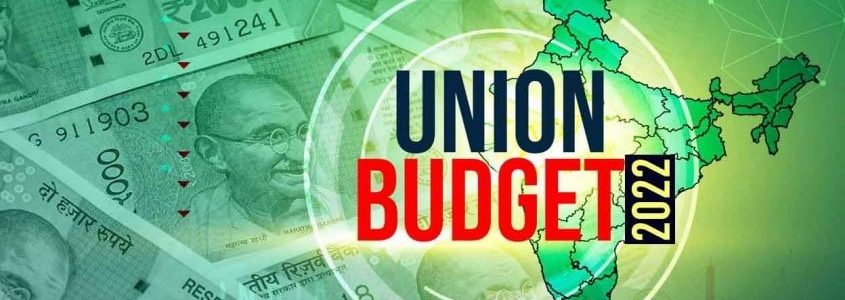This International Women’s Day is a reminder that we must strive for a gender-inclusive economic recovery and not lose the strides made in women’s empowerment in the last few decades on account of the pandemic
Authors: Sona Mitra, Mayank Mishra & Nikhil Iyer
Published: March 05, 2022 in the Hindustan Times
 The Covid-19 pandemic has caused serious economic disruptions. As we celebrate International Women’s Day (IWD), a focus on gender-responsive economic recovery is imperative to counter the disproportionate impact of the pandemic on women, especially in India.
The Covid-19 pandemic has caused serious economic disruptions. As we celebrate International Women’s Day (IWD), a focus on gender-responsive economic recovery is imperative to counter the disproportionate impact of the pandemic on women, especially in India.
The majority of the working women (around 91%) in India are in informal employment, characterised by job insecurity, income volatility, and the absence of social safety nets that prevent and assuage the impact of economic shocks. According to the State of Working India Report 2021, by December 2020, nearly 47% women suffered a permanent job loss, compared to 7% men.
Even though the Periodic Labour Force Survey (PLFS) 2019-20 reported an improvement in female labour force participation rate (FLFPR) for women aged 15 and above – 30%, against 24.5% and 23.3% the previous two years – scholars have disputed these gains. As per the latest official data, FLFPR had dropped to 21.2% in January-March 2021, with the female unemployment rate increasing to 11.8%, against 10.6% a year ago. (PLFS Quarterly 2021).
The informal sector lacks access or awareness of financial services, new modes of payment banks/platforms, and the requirements needed to access credit. For women workers, the hurdles to access are compounded by a lack of access to smart gadgets and the knowledge of using them.
The pandemic has also severely hit the women-owned MSMEs. The disruption caused by the successive lockdowns has led to a loss of revenue and business discontinuity for MSMEs, including women-owned ones. The Indian entrepreneurial ecosystem is heavily skewed – the last published economic census (2013-14) revealed that women-owned enterprises comprised only 13.8% of the total number of enterprises. Most of them are small businesses. Further, women entrepreneurs in India face issues like lack of skills, training, and support, adversely impacting their professional journey. In such a scenario, the pandemic may push women entrepreneurs out of the market, who may find it harder to return.
For a gender-responsive recovery, targeted and accessible government assistance is important to improve women’s access to jobs and earnings. Moreover, it is not only important to arrest the decline in FLFPR but also sustain the gains made in women’s economic empowerment, which clearly leads to positive spill-over effects on family planning, maternal and child health, investment in child’s education, etc. In this context, we outline a few proposals from our paper on a Gender Responsive and Inclusive Economic Recovery in the COVID-19 Context.
Let us begin with urban employment. There has been a discussion around the need for a national urban employment programme to complement the National Rural Employment Guarantee (MGNREGA) since the later part of 2020.
States such as Tamil Nadu have also implemented similar programmes. The scheme could inbuild minimum workdays guaranteed for women, with mandates on urban local bodies to pursue gender-responsive works and IEC campaigns. Such programmes have the potential in facilitating women back into the labour force.
Women are also securing opportunities in the emerging digital-enabled gig economy, particularly in platform work in the service domain. However, this form of employment is still precarious and needs social security coverage. The Code on Social Security was passed in 2020, which includes mention of platform and gig workers; however, its implementation is yet to be felt. Recent reports suggest 10 crore unorganised workers have registered on the e-Shram portal, of which about eight lakh are gig workers. The Government of India may consider providing incentives for platforms to offset the implementation costs that digital platforms will have to incur to provide social security to their workers.
To prepare women for industry 4.0, India has to provide skilling and training in digital and business skills tailored to the future of work. In line with the government’s priority to bring India online, women should be equipped to exploit the internet’s opportunities. Existing gender resource centres under the National Rural Livelihoods Mission (NRLM) and National Urban Livelihoods Mission (NULM), where women access information on schemes, entitlements, etc. could be upgraded to impart these skills. The PMKVY should include provisions for digital training of young girls.
And finally, prompt action is necessitated to redress the disproportionately (six times) high time Indian women spend on care work, which has worsened during the pandemic and has driven many women to withdraw from the labour force. Therefore, it is imperative that infrastructural provisions that reduce time spent on household chores and enable child and elderly care be provided to women at every nook and corner of the country. This would entail ensuring basic infrastructure such as water supply, road connectivity, energy, and clean fuel access. In addition, the universalisation of creches needs to be approached with utmost seriousness.
Further, as India has one of the worst health/education worker to population ratios, these are areas in which women can potentially find opportunities. Researchers at the Azim Premji University estimate that regularising the jobs of anganwadi workers, Accredited Social Health Activists (ASHA), etc. and filling existing vacancies can create up to 3 million jobs.
As the country strives to get back to normal, the government has an important role in ensuring that women do not get left behind. This IWD is a reminder that we must strive for a gender-inclusive economic recovery and not lose the strides made in women’s empowerment in the last few decades on account of the pandemic.
Authors: Sona Mitra is principal economist, IWWAGE, and Mayank Mishra and Nikhil Iyer are public policy manager, and policy analyst at The Quantum Hub Consulting


 A lot has been written about the emphasis on ‘digital’ in the 2022 Union Budget (indeed, the word ‘digital’ was mentioned over 30 times in the Finance Minister’s speech). But one aspect of this emphasis that hasn’t been talked about as much is the importance given in the budget to digital public infrastructure (DPI) – the idea that cross-sectoral ‘digital rails’ like ID, payments and data exchanges when combined with open interconnected data systems in sectors like health, education and social protection, can transform service delivery for ordinary citizens.
A lot has been written about the emphasis on ‘digital’ in the 2022 Union Budget (indeed, the word ‘digital’ was mentioned over 30 times in the Finance Minister’s speech). But one aspect of this emphasis that hasn’t been talked about as much is the importance given in the budget to digital public infrastructure (DPI) – the idea that cross-sectoral ‘digital rails’ like ID, payments and data exchanges when combined with open interconnected data systems in sectors like health, education and social protection, can transform service delivery for ordinary citizens.
 While the pandemic has accelerated education online, it has also exposed a deep digital divide, with more than 30% students not having access to online learning. This has increased the focus on building inclusive solutions in EdTech. A ray of hope in this context is the National Digital Educational Architecture (NDEAR), the blueprint for which was recently released by the government. Set up as a digital pathway to the policy goals envisioned in the National Education Policy, 2020, NDEAR takes on a ‘Open Digital Ecosystem’ approach, where a set of principles, standards, specifications, building blocks and guidelines seek to enable different entities to create elements of the digital education ecosystem. At its core is the principle of interoperability, i.e., enabling disparate education related tech systems to “talk to each other” seamlessly, rather than operating in silos, thereby multiplying the possibilities of impact.
While the pandemic has accelerated education online, it has also exposed a deep digital divide, with more than 30% students not having access to online learning. This has increased the focus on building inclusive solutions in EdTech. A ray of hope in this context is the National Digital Educational Architecture (NDEAR), the blueprint for which was recently released by the government. Set up as a digital pathway to the policy goals envisioned in the National Education Policy, 2020, NDEAR takes on a ‘Open Digital Ecosystem’ approach, where a set of principles, standards, specifications, building blocks and guidelines seek to enable different entities to create elements of the digital education ecosystem. At its core is the principle of interoperability, i.e., enabling disparate education related tech systems to “talk to each other” seamlessly, rather than operating in silos, thereby multiplying the possibilities of impact.
 In March 2020, the Reserve Bank of India (RBI) issued guidelines that prohibit merchants (including all e-commerce websites, streaming platforms) and payment aggregators (such as Razorpay and Instamojo) from storing customer card information. The aim of this measure is to increase security of stored card details while reducing the risk of data breaches. Globally, and even in India, there have been several instances of financial data leaks over the last few years. With digital transitions increasing manifold, the likely consequences of a data leak – both financial as well as in terms of trust – can be very real and damaging. Taking cognizance of this issue, the RBI has been progressively tightening regulations to ensure financial data security while also limiting the number of actors who can store sensitive data.
In March 2020, the Reserve Bank of India (RBI) issued guidelines that prohibit merchants (including all e-commerce websites, streaming platforms) and payment aggregators (such as Razorpay and Instamojo) from storing customer card information. The aim of this measure is to increase security of stored card details while reducing the risk of data breaches. Globally, and even in India, there have been several instances of financial data leaks over the last few years. With digital transitions increasing manifold, the likely consequences of a data leak – both financial as well as in terms of trust – can be very real and damaging. Taking cognizance of this issue, the RBI has been progressively tightening regulations to ensure financial data security while also limiting the number of actors who can store sensitive data.
 The severe and disproportionate impact of the COVID-19 pandemic on the most vulnerable and marginalised groups, which includes girls and women, in India has been discussed in much detail. Women have not only faced massive job and income losses with slow revival, but also witnessed an increase in unpaid care work, and have been forced to exit the labour force in large numbers.
The severe and disproportionate impact of the COVID-19 pandemic on the most vulnerable and marginalised groups, which includes girls and women, in India has been discussed in much detail. Women have not only faced massive job and income losses with slow revival, but also witnessed an increase in unpaid care work, and have been forced to exit the labour force in large numbers.
 It is widely acknowledged that Indian cities are increasingly becoming congested and unliveable. Our biggest metros — long considered the engines of growth, melting pots of diverse cultures, and vanguards of prosperity — are now ranked among the lowest in the world on quality of life indices.
It is widely acknowledged that Indian cities are increasingly becoming congested and unliveable. Our biggest metros — long considered the engines of growth, melting pots of diverse cultures, and vanguards of prosperity — are now ranked among the lowest in the world on quality of life indices.
 Instances of online fraud have rapidly increased over the last couple of years in India as more users have started using web-based services. Many fraudulent apps lure users by offering benefits in the form of some reward or payout. In the Delhi police case, for instance, users were promised an opportunity to double their invested amount within 4-5 weeks. There are also many known cases of fake predatory dating apps that use misleading advertisements, impersonation and chatbots to entice customers to purchase subscriptions. Investigations by journalists suggest that often app-makers manage reviewers to increase their app ratings and improve visibility on app stores.
Instances of online fraud have rapidly increased over the last couple of years in India as more users have started using web-based services. Many fraudulent apps lure users by offering benefits in the form of some reward or payout. In the Delhi police case, for instance, users were promised an opportunity to double their invested amount within 4-5 weeks. There are also many known cases of fake predatory dating apps that use misleading advertisements, impersonation and chatbots to entice customers to purchase subscriptions. Investigations by journalists suggest that often app-makers manage reviewers to increase their app ratings and improve visibility on app stores.
 While some skilling schemes have since been restructured, the problem has not been fully addressed. For instance, when the government introduced the Garib Kalyan Rozgar Yojana (GKRY) last year to address skilling and unemployment issues that emerged in the wake of reverse migration, it did not pan out as anticipated. Many reports suggest that GKRY’s demand-driven skilling initiatives were not successful; they did not reach the intended beneficiaries.
While some skilling schemes have since been restructured, the problem has not been fully addressed. For instance, when the government introduced the Garib Kalyan Rozgar Yojana (GKRY) last year to address skilling and unemployment issues that emerged in the wake of reverse migration, it did not pan out as anticipated. Many reports suggest that GKRY’s demand-driven skilling initiatives were not successful; they did not reach the intended beneficiaries.
 According to the 2011 Census data, nearly 11 million housing units were vacant in the country. This combined with a shortage of nearly 19 million units in 2012 presents a perplexing picture. There are several policy bottlenecks due to which homeowners prefer to keep their homes vacant instead of renting them out. Firstly, the existence of pro-tenant rent control laws across Indian states continues to be an obstacle. These laws protect the rights of the tenants while diluting those of the homeowners. In the case of housing that was not vacant, as per the National Sample Survey Organisation’s data of 2012, 71 per cent of households living in rented accommodations did not have a written contract. This informality could be, in part, a result of this pro-tenant character of the rent control laws and partly because of the large proportion of informal housing. Secondly, judicial delays in case of disputes have dampened the spirits of homeowners over time.
According to the 2011 Census data, nearly 11 million housing units were vacant in the country. This combined with a shortage of nearly 19 million units in 2012 presents a perplexing picture. There are several policy bottlenecks due to which homeowners prefer to keep their homes vacant instead of renting them out. Firstly, the existence of pro-tenant rent control laws across Indian states continues to be an obstacle. These laws protect the rights of the tenants while diluting those of the homeowners. In the case of housing that was not vacant, as per the National Sample Survey Organisation’s data of 2012, 71 per cent of households living in rented accommodations did not have a written contract. This informality could be, in part, a result of this pro-tenant character of the rent control laws and partly because of the large proportion of informal housing. Secondly, judicial delays in case of disputes have dampened the spirits of homeowners over time.
 The rise of big data and machine learning has caused an immense growth in powerful technologies and applications. But simultaneously, the same technologies have become a privacy nightmare for their users. The algorithms behind these technologies amass a huge amount of data from individuals, which is then used (or sold to other firms) to target, persuade, reward, or penalise users. While privacy issues have been extensively debated, a discussion on how data governance laws might impact women differently than men and affect their agency on the internet has been mostly missing.
The rise of big data and machine learning has caused an immense growth in powerful technologies and applications. But simultaneously, the same technologies have become a privacy nightmare for their users. The algorithms behind these technologies amass a huge amount of data from individuals, which is then used (or sold to other firms) to target, persuade, reward, or penalise users. While privacy issues have been extensively debated, a discussion on how data governance laws might impact women differently than men and affect their agency on the internet has been mostly missing.
 With the second wave of the Covid-19 pandemic, India has been battling a Hydra, with new issues emerging from the wounds of older ones. In response, the Centre and States have been working on two key points critical for our country’s recovery from the pandemic — the immediate healthcare response, and inoculation drives across the country. While the immediacy of these concerns is undoubtable, in addition to the health contours of this crisis, an equally close watch on its socio-economic aspects is essential towards designing a relief and recovery plan that is both inclusive and sustainable.
With the second wave of the Covid-19 pandemic, India has been battling a Hydra, with new issues emerging from the wounds of older ones. In response, the Centre and States have been working on two key points critical for our country’s recovery from the pandemic — the immediate healthcare response, and inoculation drives across the country. While the immediacy of these concerns is undoubtable, in addition to the health contours of this crisis, an equally close watch on its socio-economic aspects is essential towards designing a relief and recovery plan that is both inclusive and sustainable.
 Women were disproportionately impacted by the economic shock of the pandemic last year, as COVID-19 guidelines prevented work in sectors like construction, beauty and wellness, domestic work, sex work, among others. Estimates suggest that nearly 70 percent of women in the working population in December 2019 had lost their jobs by April 2020, compared to 35 percent of men. The State of Working India 2021 report also states that 90 percent of men employed in late 2019 were employed in late 2020 as well, whereas the corresponding figure for women was only 50 percent. The second wave may also affect the female labour force participation rate, which was already down to seven percent in urban areas by November 2020, even as female enrolment has improved at all levels of education.
Women were disproportionately impacted by the economic shock of the pandemic last year, as COVID-19 guidelines prevented work in sectors like construction, beauty and wellness, domestic work, sex work, among others. Estimates suggest that nearly 70 percent of women in the working population in December 2019 had lost their jobs by April 2020, compared to 35 percent of men. The State of Working India 2021 report also states that 90 percent of men employed in late 2019 were employed in late 2020 as well, whereas the corresponding figure for women was only 50 percent. The second wave may also affect the female labour force participation rate, which was already down to seven percent in urban areas by November 2020, even as female enrolment has improved at all levels of education.